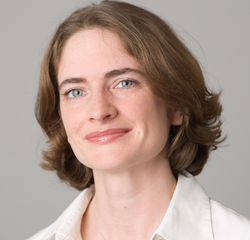Distinguished iNANO Lecture: Programmed Self-Assembly of Bioactive Architectures
Professor Tanja Weil, Department of Organic Chemistry III, Ulm University, Germany
Info about event
Time
Location
iNANO auditorium (1593-012), Gustav Wieds Vej 14, 8000 Aarhus C

Professor Tanja Weil, Department of Organic Chemistry III, Macromolecular Chemistry and Biomaterials, Ulm University, GermanyProgrammed Self-Assembly of Bioactive ArchitecturesSelf-assembly at a molecular level exemplifies an integral chemical principle towards constructing ordered and bioactive architectures with high structural complexity. This feature is represented extensively in Nature where supramolecular forces dominate, in an intelligent manner, the flow of complex biological pathways. Taking advantage of these macromolecules of Nature and their intrinsic structural precision, synthetic chemistry can be used as a complementary tool to alter and re-program them to create a unique set of biochemical functions.From an array of nucleic acids, peptides to proteins, we show that the conjugation of synthetic moieties at each level in a sequence defined manner facilitates the integration of core chemical concepts involving targeting, multivalency, stimulus responsiveness, bioorthogonal assemblies and controlled release. With each biohybrid platform as a result through rational design, their physical, chemical and biological properties are comprehensively evaluated for specific biomedical application (drug delivery, protein activity modulation, viral transport etc.). Following these primary investigations, the complexity of the architecture is further increased through systematic chemical modifications to include additional ‘programmable’ functions, sequences and/or multiple triggers. Collectively, we demonstrate that synthetic chemistry can be elegantly developed to function as ‘codes’ within a biological framework to create intelligent bioactive structures as the next generation hybrid nanomaterial.
| |
Host: Associate professor Alexander Zelikin, iNANO & Dept. of Chemistry, Aarhus University |
